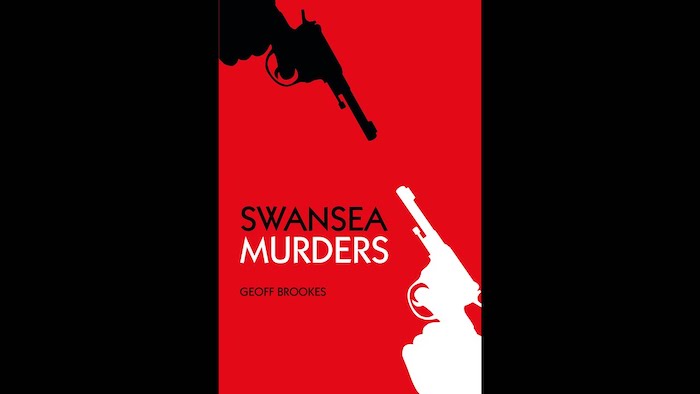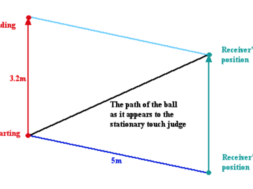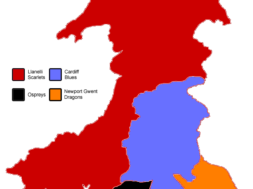
Swansea Murders
Murder, drunken violence, and bizarre killings—these are at the heart of Swansea Murders, a gripping new book by retired deputy headteacher Geoff Brookes. Chronicling 25 true and often unsettling tales of pre-war deaths in Swansea, the book delves into the randomness and brutality of crime in past centuries. Many of these stories are laced with heavy drinking, reckless behavior, and shocking consequences, painting a vivid picture of life and death in historical Swansea.
One particularly absurd case involves a drunken servant playing “shoot the hat,” a foolish game that ended in tragedy when James Bell fatally shot his friend, George Thomas, in the head. The game began as a drunken challenge in the early hours of a June morning in 1761, when Bell and three other young servants to military officers stationed in Swansea began playing with their handguns. Barmaid Diana Watts overheard them planning to go to the burrows to shoot at driftwood and birds. Then Bell, either out of bravado or sheer recklessness, suggested aiming at Thomas’s hat. George Thomas himself agreed to the challenge, perhaps never imagining Bell would miss so disastrously. But miss he did, and instead of grazing the hat, the bullet struck Thomas in the head, killing him instantly. Bell denied murder, but he was convicted of manslaughter and branded after invoking the “benefit of clergy,” an archaic legal loophole that saved many from harsher punishment.
Another shocking case from Swansea murders involved a deadly dispute over food. On October 19, 1805, well-off resident Morgan Williams was having supper when his maid, Margaret Phillips, brought him potatoes and butter. When he asked if that was all the butter, she retorted that if he wanted more, he could fetch it from the dairy himself. Enraged by her defiance, Williams launched a brutal attack, kicking, punching, and stamping on her until she succumbed to her injuries. Initially buried in haste, her body was later exhumed, and Williams was charged with manslaughter. Though he avoided a murder conviction, he was fined £50 and sentenced to a year in prison—by then, the “benefit of clergy” was no longer available to him.
Violence over seemingly minor slights was not uncommon. One chilling example occurred on October 18, 1730, when Morgan Mathews, a county fiddler from Cardiff, was drinking at John Read’s pub in Swansea. When asked to play by Roger Landeg, Mathews refused, stating that he was “not working.” Insulted, Landeg and another drinker, Nehemiah Rees, turned on the musician, with Rees striking him repeatedly with the handle of his whip. Mathews succumbed to his injuries a week later. His wife, Anne, pursued justice, leading to the arrest of both men. Landeg died in prison before trial, while Rees was convicted of manslaughter. He invoked the “benefit of clergy” and was branded, a punishment that, though painful, was far lighter than what he might have faced otherwise.
Food played a sinister role in another Swansea case when, in May 1845, farmer George Gibbs from Overton, Port Eynon, mysteriously died after consuming a breakfast of leftover lobster, three oysters, and a pint and a half of beer. Suspicion soon fell on his son, George Beynon Gibbs, as tensions between the two had been well known. Testing later revealed mercury poisoning, leading many to suspect foul play. However, no charges were ever brought against the son, as some argued that vinegar from the lobster may have reacted dangerously with medication Gibbs was taking.
There was little doubt about the perpetrator in one of Swansea’s most brutal murders. On October 25, 1872, Andrew Joseph Duncan, a blockmaker, was found soaked and semi-naked in Welcome Lane after attempting to drown himself in the North Dock. It was soon discovered that his wife, Emma Duncan, had been savagely attacked with an iron and a razor. Though he pleaded insanity, Duncan was convicted of murder and sentenced to death. However, a medical superintendent from Broadmoor Hospital later declared him insane, leading to a reprieve. He was instead detained “at Her Majesty’s pleasure” and, after 19 years, was released into the care of his brother in Liverpool. In a tragic twist, in January 1893, Duncan walked to the Langton Graving Dock and took his own life, seemingly haunted by his past.
These are just a few examples of the grim and often senseless killings explored in Swansea Murders, where seemingly trivial disagreements often turned fatal.
However, Swansea murders are matched by Cardiff, too, has had its share of shocking murders. One of the most infamous was the case of Mahmood Mattan, a Somali seaman wrongly accused and executed in 1952 for the murder of shopkeeper Lily Volpert. It took nearly half a century for his name to be cleared, making it one of the most tragic miscarriages of justice in Welsh history.
Another chilling Cardiff case is the 1895 “Butetown Murder,” in which a sailor, William Clarke, was brutally stabbed to death in a fight near the docks. The area, known for its mix of sailors, traders, and rough crowds, had seen many violent deaths, but Clarke’s murder stood out for its sheer savagery. The case highlighted the dangers of Cardiff’s bustling docklands at the time.
In more recent history, Cardiff was rocked by the Lynette White murder in 1988. The young woman was brutally killed, leading to one of Britain’s most notorious wrongful convictions. The Cardiff Three were imprisoned for a crime they did not commit, only for DNA evidence years later to reveal the real killer, Jeffrey Gafoor. This case remains a stark reminder of the flaws within the justice system.
Brookes’ Swansea Murders is an unflinching look at the brutality of crime in Welsh history, offering a fascinating, if often grim, journey through Swansea’s past. When paired with Cardiff’s own infamous cases, it becomes clear that Welsh cities have harbored their share of dark secrets. Whether driven by rage, drink, or injustice, these stories prove that history is sometimes stranger—and more violent—than fiction.














Comment(1)
Comments are closed.